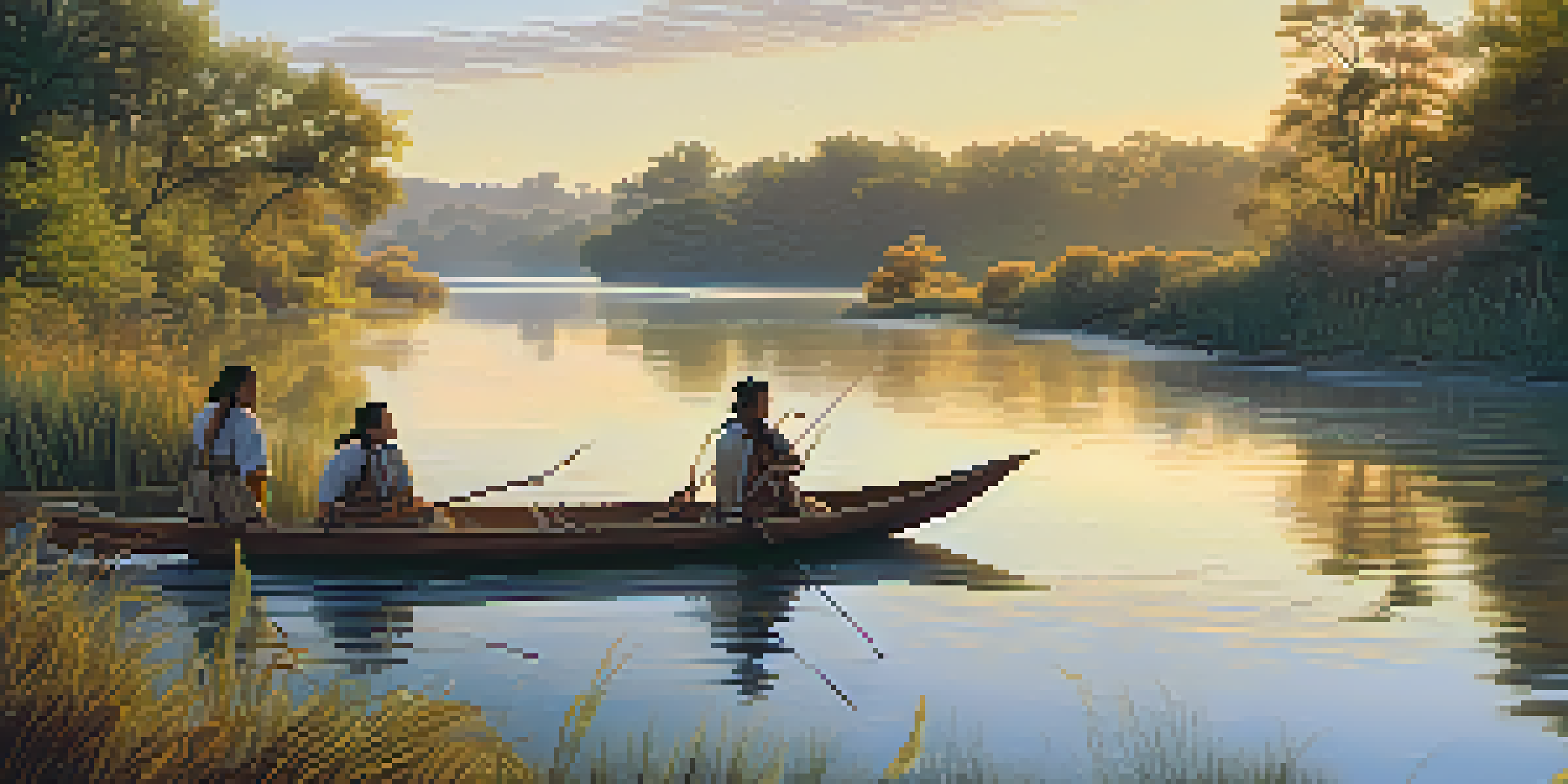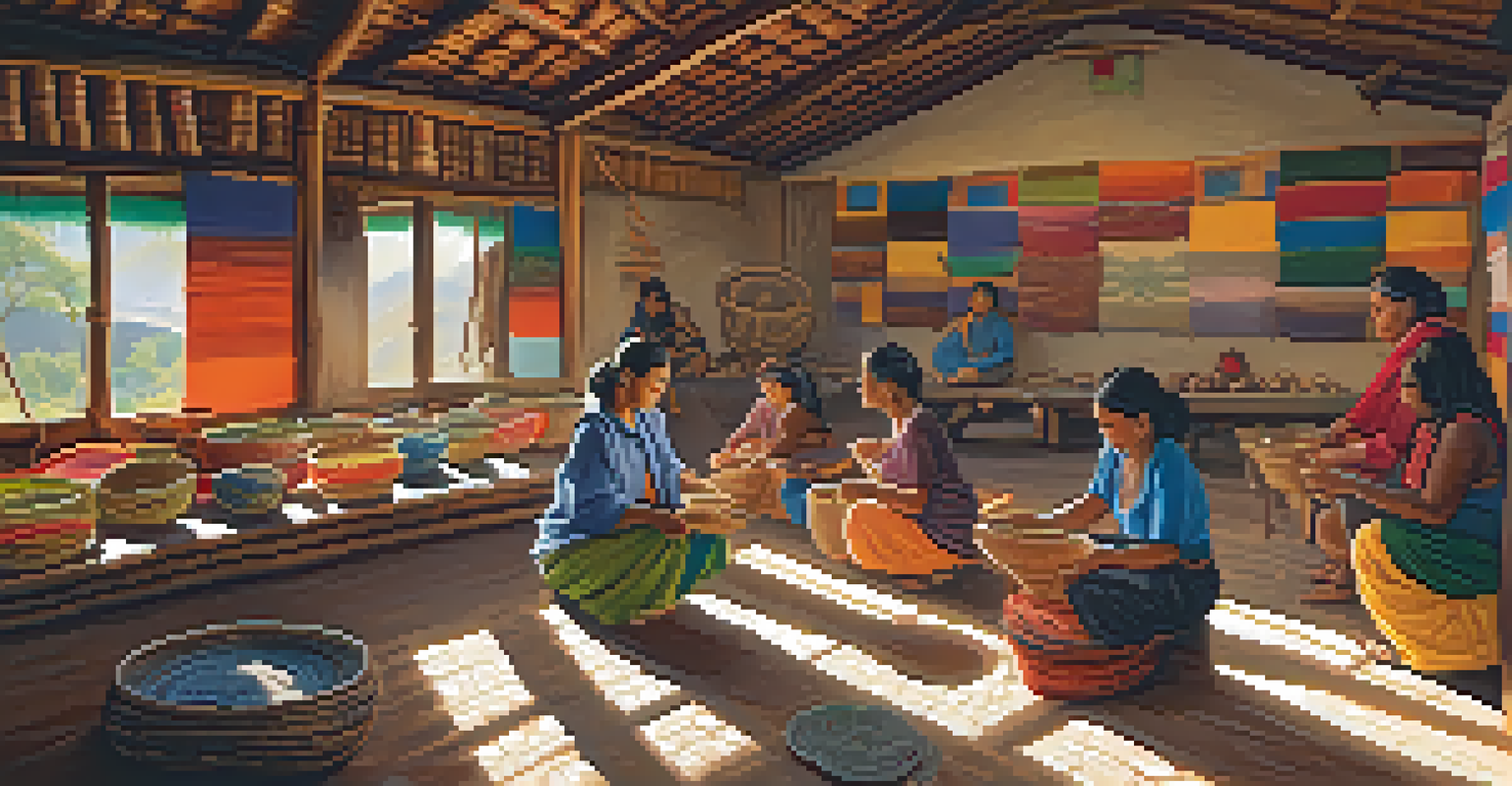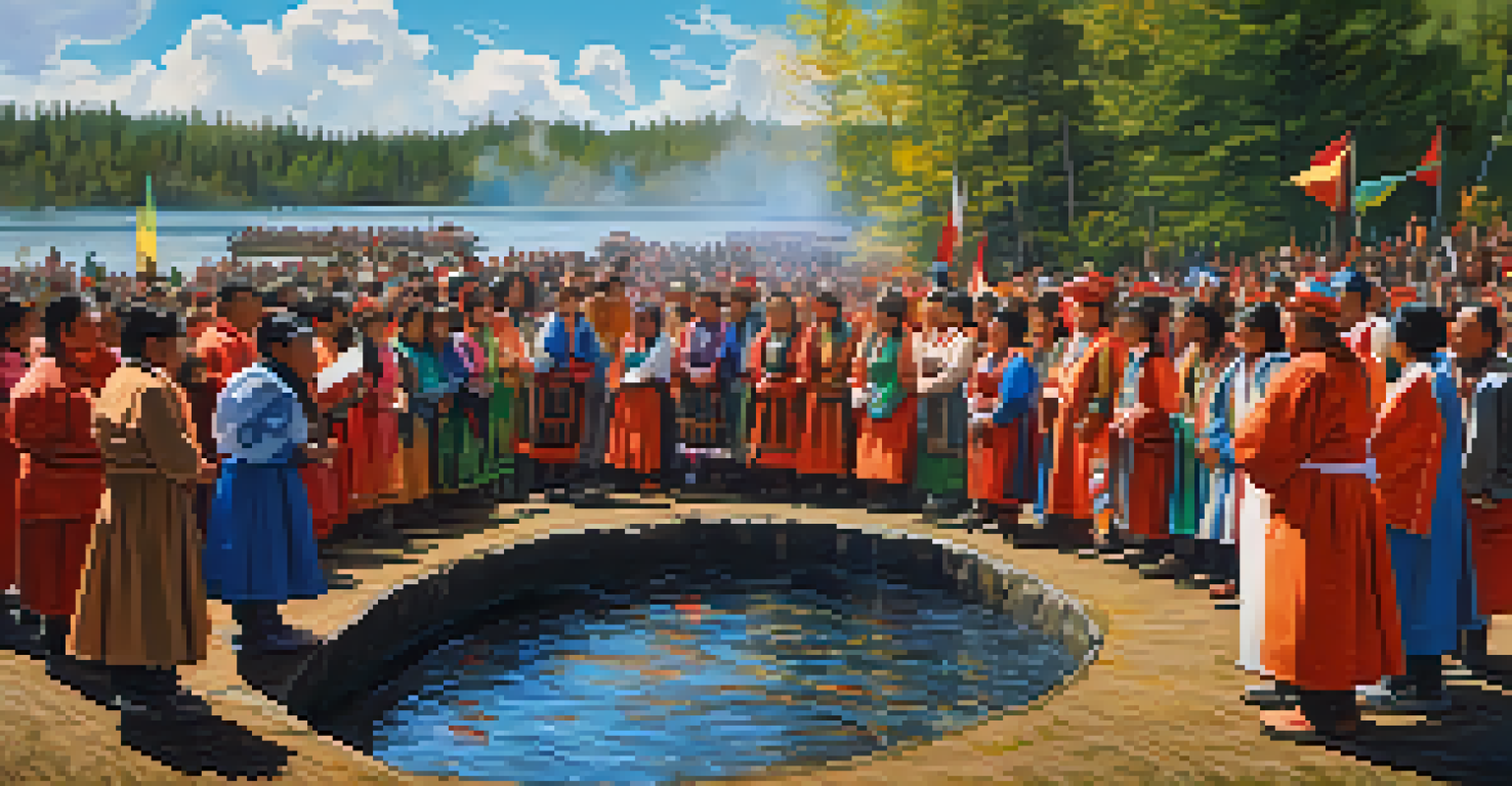Sacramento's Indigenous Peoples: The Original Inhabitants

A Brief History of Sacramento's Indigenous Peoples
Sacramento, situated at the confluence of the Sacramento and American Rivers, has a rich history that predates European colonization. The region was originally inhabited by several Indigenous groups, including the Nisenan, Plains Miwok, and the Maidu. These communities thrived on the abundant natural resources, establishing complex societies, rich traditions, and deep connections to the land.
The land is the source of our life and culture; it is our identity and our home.
For thousands of years, these tribes lived in harmony with their environment, using the rivers for fishing and transportation, and the surrounding lands for hunting and gathering. Their knowledge of the local ecosystem allowed them to cultivate various plants and sustain their communities. This interdependence with nature highlights the importance of the land in their cultural identity.
However, the arrival of European settlers in the mid-19th century marked a turning point. The Gold Rush brought an influx of newcomers, often resulting in violent conflicts and displacement of Indigenous peoples. Despite these challenges, the resilience and adaptability of Sacramento's Indigenous groups have allowed them to maintain aspects of their culture and traditions to this day.
The Tribes of Sacramento: An Overview
The Nisenan, Plains Miwok, and Maidu are some of the prominent tribes that originally inhabited the Sacramento area. The Nisenan, known for their rich oral traditions and basket-weaving skills, primarily lived along the American River and its tributaries. The Plains Miwok, on the other hand, occupied the northern Sacramento Valley and were skilled hunters and fishers, developing a deep understanding of their environment.

The Maidu people, residing in the Sierra Nevada foothills, are recognized for their intricate basketry and vibrant storytelling traditions. Each tribe has its unique practices, languages, and spiritual beliefs, which reflect their connection to the land and their way of life. This diversity is a testament to the rich tapestry of cultures that existed long before modern Sacramento took shape.
Sacramento's Indigenous Heritage
The region's Indigenous peoples, such as the Nisenan, Plains Miwok, and Maidu, have a rich cultural history that emphasizes their deep connection to the land.
Today, these tribes continue to advocate for their rights and work towards preserving their languages and traditions. Many Indigenous organizations are committed to educating the public about their history and promoting cultural awareness, ensuring that their stories are not forgotten.
Cultural Practices and Traditions
Sacramento's Indigenous peoples have a wealth of cultural practices that have been passed down through generations. Traditional ceremonies, dances, and storytelling play a crucial role in maintaining their cultural heritage. These practices not only celebrate their history but also foster a sense of community and connection among members.
Indigenous peoples have the right to maintain and strengthen their distinctive spiritual relationship with their traditionally owned or otherwise occupied and used lands, territories, waters, and coastal seas.
One notable tradition is the annual gathering for the First Salmon Ceremony, which honors the first salmon caught in the season. This event emphasizes gratitude for nature's bounty and reinforces the community's bond with the rivers. Such rituals showcase the deep respect Indigenous peoples have for the environment and their commitment to sustainable practices.
Additionally, art forms like basket weaving, beadwork, and pottery serve as vital expressions of identity and creativity. These crafts often incorporate traditional designs and techniques, symbolizing the connection between the past and present. Through these cultural practices, Sacramento's Indigenous peoples continue to share their stories and preserve their heritage.
The Impact of Colonization
Colonization had a profound impact on Sacramento's Indigenous peoples, leading to significant loss of land, culture, and population. The influx of settlers during the Gold Rush resulted in violent confrontations, forced relocations, and the introduction of diseases that devastated Indigenous communities. These changes disrupted traditional ways of life and left lasting scars on the affected tribes.
Many Indigenous peoples were forced onto reservations, where their cultural practices were often suppressed or altered. Education systems imposed by settlers frequently disregarded Indigenous languages and traditions, further eroding their cultural identity. This legacy of colonization has had profound implications for the descendants of these tribes, shaping their contemporary experiences.
Impact of Colonization
Colonization led to significant loss of land, culture, and population among Sacramento's Indigenous tribes, but their resilience has spurred efforts for cultural revival.
Despite these challenges, Indigenous communities in Sacramento have shown remarkable resilience. Efforts to reclaim their heritage, advocate for rights, and educate others about their history have gained momentum in recent years. This ongoing journey of healing and revival represents a powerful testament to their strength and determination.
Contemporary Indigenous Communities in Sacramento
Today, Sacramento is home to a vibrant Indigenous community that continues to celebrate its rich heritage. Various organizations and cultural centers work tirelessly to promote awareness and appreciation of Indigenous history and traditions. Initiatives like powwows, art exhibitions, and cultural festivals provide opportunities for both Indigenous and non-Indigenous people to come together and celebrate diversity.
One such organization is the Sacramento Native American Health Center, which focuses on improving the health and well-being of Indigenous peoples in the area. They offer a range of services, including mental health support and cultural education programs, helping to bridge the gap between traditional practices and modern healthcare.
Additionally, many Indigenous artists and leaders are gaining recognition for their contributions to the cultural landscape of Sacramento. Their work reflects the complexities of contemporary Indigenous identity while honoring the past. This dynamic presence enriches the community and fosters a greater understanding of Indigenous peoples' ongoing journey.
Preserving Indigenous Languages and History
Language is a vital component of cultural identity, and many Indigenous tribes in Sacramento are actively working to revitalize their languages. Efforts include language classes, immersion programs, and the creation of educational materials that celebrate Indigenous tongues. These initiatives are crucial for passing down traditions and ensuring that younger generations remain connected to their roots.
For instance, the Maidu Language Project focuses on documenting and teaching the Maidu language, which has faced significant decline over the years. By engaging community members, the project fosters a sense of pride and ownership over their heritage. Such endeavors not only preserve language but also strengthen community ties and promote cultural continuity.
Revitalizing Indigenous Languages
Indigenous communities in Sacramento are actively working to preserve their languages and traditions through educational initiatives and community engagement.
Moreover, historical research and documentation projects are essential for safeguarding the narratives of Sacramento's Indigenous peoples. Collaborations between community members and academic institutions help uncover and share stories that have long been overlooked. This work not only enriches the understanding of local history but also empowers Indigenous communities to reclaim their narrative.
Looking Ahead: The Future of Sacramento's Indigenous Peoples
As Sacramento's Indigenous peoples continue to advocate for their rights and cultural preservation, the future holds promise for greater recognition and respect. Increased awareness of their history and contributions is paving the way for meaningful partnerships between Indigenous communities and local governments. Such collaborations can foster initiatives that support economic development, education, and cultural revitalization.
Moreover, younger generations of Indigenous leaders are emerging, bringing fresh perspectives and innovative ideas to the forefront. Their commitment to social justice and environmental stewardship reflects a deep-rooted connection to their heritage while addressing contemporary challenges. This leadership ensures that Indigenous voices are heard and respected in the broader conversation about community and identity.

Ultimately, the journey of Sacramento's Indigenous peoples is one of resilience and hope. By honoring their past and embracing their cultural legacy, they are not only enriching their own communities but also contributing to the diverse fabric of Sacramento. As we look ahead, fostering mutual respect and understanding will be key to building a brighter future for all.